ERMITES SUMMER SCHOOL 2025
Recap of the 13th Edition of the Multimodal Research School on AI, Techniques & Sciences — May 26–27, 2025
The ADSIL AI Bioacoustics Chair and the International Center for AI in Natural Acoustics (CIAN) hosted the 13th edition of the Multimodal Research School on Artificial Intelligence at the UFR ST of the University of Toulon (UTLN), in La Garde, on May 26 and 27, 2025.
At the heart of this two-day event was the collective and in-depth exploration of the functional ambiguity of biosonars, a major sensory modality in marine and flying mammals.
Together with PhD candidate Nicolas Deloustal, we analyzed numerous real-world examples of underwater and nocturnal hunting sequences in cetaceans and bats. These examples, introduced at the opening session on May 26, served as the foundation for our discussions.
The cases raised key questions concerning:
signal processing and machine learning approaches,
bat hunting strategies, including apparent frequency (AF) calculations and behavioral interpretations,
individual hunting strategies of sperm whales, along with AF computation and insights,
possible collective hunting strategies of sperm whale pods,
pulse trains in fin whales and humpbacks,
the relationship between anthropophony and adaptive ambiguity,
the potential of Large Language Models (LLMs) to model and predict biosonar-based behavior.
On the evening of May 26, wideband multi-track recordings were carried out using equipment from the UTLN start-up Intelligent Acoustics, under the guidance of Yves Tupinier, an international pioneer in bat sonar research.
That same afternoon, a theoretical session led by Patrick Flandrin (ENS Lyon, French Academy of Sciences) allowed us to deepen our understanding of these complex phenomena.
On the morning of May 27, participants worked hands-on with expert-annotated audio files on dedicated PCs, testing their hypotheses and applying various analysis methods.
Finally, on the afternoon of May 27, a forward-looking discussion with Walter Zimmer, an expert in passive acoustic monitoring of cetaceans, helped open new research perspectives for the coming months.



